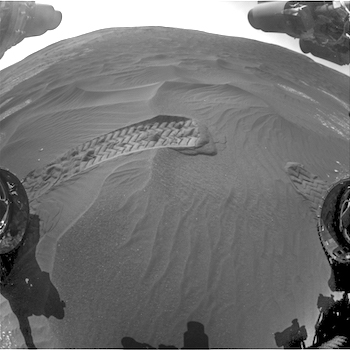 Sol 2409, May 16, 2019, update by MSL scientist Ryan Anderson: The sol 2408 plan ended with the rover using its front wheel to dig a small trench in a ripple at the ripple field named “Rigg.” That means today’s plan is focused on studying what that scuff uncovered. There is a lot that we can learn from these patches of active sand that we occasionally encounter as we explore Gale crater!
Sol 2409, May 16, 2019, update by MSL scientist Ryan Anderson: The sol 2408 plan ended with the rover using its front wheel to dig a small trench in a ripple at the ripple field named “Rigg.” That means today’s plan is focused on studying what that scuff uncovered. There is a lot that we can learn from these patches of active sand that we occasionally encounter as we explore Gale crater!
One of the big questions is where the sand comes from: by measuring the chemical composition of the sand at Rigg we can compare with sand we have seen earlier in the mission to see if the chemistry is different enough that there must be different sources. We also can compare the grain sizes in different parts of the ripple to get a better understanding of how the wind sorts sand grains under martian gravity and atmospheric pressure.
Studying the shape of the ripples in detail also helps us compare modern bedforms (the generic term for dune-like features of all sizes) to the ancient ones we see preserved in the rocks, which lets us infer similarities or differences in the environment. And of course, looking closely at these wind-blown sand features lets us get a better handle on what the winds are like in Gale crater right now… [More at link]








